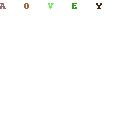Yesterday, Alex Filipenko, a famous astronomer as well as an astrophysics professor at UC Berkeley, did an AMA on Reddit. For those who don't know, an AMA is an "Ask Me Anything" done Q&A style on the social media site. Most of the questions revolved around the future of space exploration and research. Below I have posted some of the more insightful questions with the corresponding responses. You can view the AMA yourself,
here.
Q: Where do you think we will be regarding space travel/research in 50 years? 100 years?
A: Hard to say, that far in advance. I hope we will understand dark matter and dark
energy. I hope definitive evidence for extraterrestrial life is found by that time.
I'm almost certain we will have directly detected gravitational waves. Regarding
space travel, maybe within that time, people will land on Mars for the first time.
Q: How will we understand or detect dark matter/energy? Will this happen in the next 50 years?
A: Physicists are trying to directly detect dark matter in terrestrial labs. I think dark matter
will be found this way in the next 20 years
— and if not, we need to go back to the
drawing board! Dark energy will be much more difficult to directly detect, so I'm not sure
it will happen in the next 50 years. Without direct detections, a more complete understanding
of both dark matter and dark energy will come from from detailed observations of how they
affect the universe. Other astrophysicists and I are busy collecting data that are setting
ever more precise constraints on the physical nature of dark matter and dark energy.
Q: You mentioned education reform; what kind of reform do you think
would help instill an actual love of knowledge in kids today? Do you
think that our current system of just memorizing things and taking tests
is sufficient? What do you think we can do instigate that change?
A: Education reform is a very difficult issue. We have to excite kids about math and science
at an early age. We might succeed in part by making these subjects more fun (check out
http://www.piZone.org, for example). We have to show kids how math and science are relevant to
their lives, and how beautiful they are. Of course, some facts must be taught, but the
process of science and discovery should be emphasized more.
Q: What do you think of all the exoplanets being discovered?
A: It's totally fantastic! This is truly a "golden age" for research on exoplanets.
In the past few years, the Kepler spacecraft has found a few thousand
exoplanet candidates, more than 90% of which are probably genuine
exoplanets. Studies of the "Doppler wobble" of the stars they orbit, and
other observations, are gradually confirming more than more of them. Some
are in, or near, the "Goldilocks zone" where liquid water
might be found
on the surface. Some are roughly the size of Earth. These will be excellent
locations to search for life.
Q: What made you decide on astrophysics as a career?
A: I've always been fascinated by science. From ages 10 through 17, my main interest
was chemistry, but as a freshman in high school I was given a small telescope.
With it, I "discovered" Saturn
— the third "star" at which I pointed the telescope!
This really jazzed me, and astronomy became a growing interest. In my freshman
year of college, at the University of California at Santa Barbara, I took an introductory
astronomy course from Professor Stanton J. Peale, and it was truly wonderful. I realized
that the physics of the very large is governed by the physics of the very small (atoms
and subatomic particles), so by switching to astrophysics I could "have it all." So I
changed majors with the intention of becoming an astrophysicist, and I've never
regretted the choice.
One final factor in my decision: As a budding young chemist, I played with explosives
and had a couple of pretty bad accidents. I realized that I don't have the self-discipline
to stay away from dangerous chemicals, so I should switch fields as an act of
self-preservation, if nothing else!
Go
here to read the rest of his responses, some more serious and some more silly. (Fun aside: Someone also posted a
GIF of Filipenko dancing on the Berkeley campus.)



